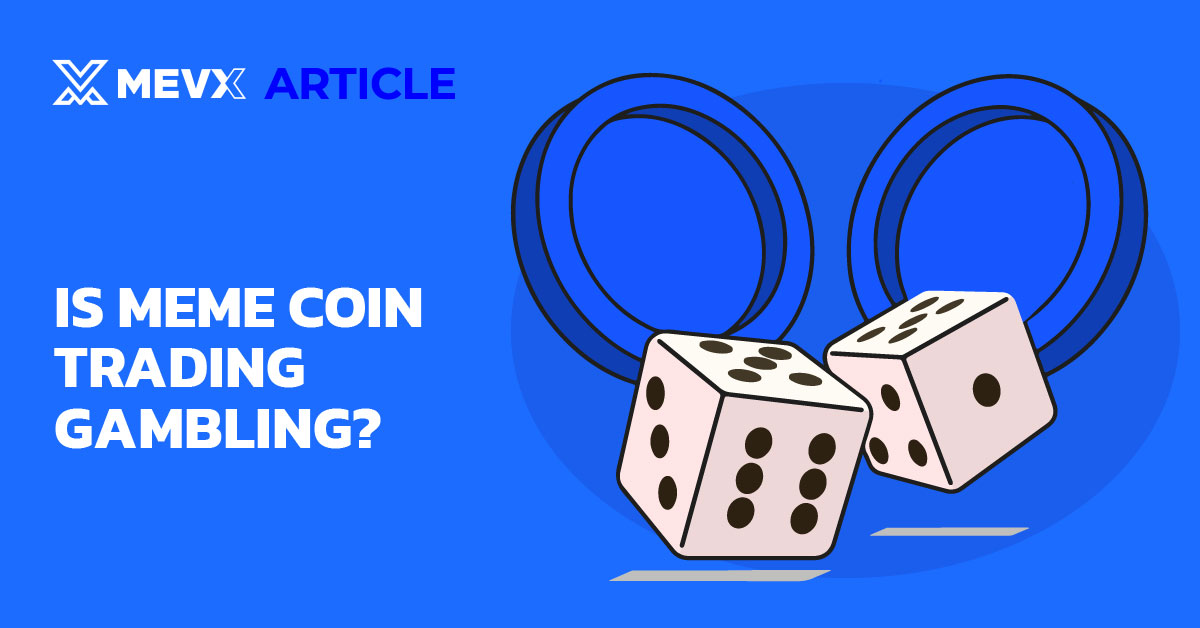The rapid rise of meme coins has ignited a fierce debate within the financial community: Is Meme coin Trading Gambling or a legitimate form of investment? On the surface, the astronomical gains and celebrity-driven hype suggest a casino-like environment. However, a closer look reveals that the line between calculated risk and pure chance is blurry, depending heavily on the trader’s strategy and mindset.

Defining the Terms: Investment vs. Gambling
To answer the question, we first need to define what distinguishes investment from gambling.
- Investment is typically a long-term strategy based on fundamental analysis. Investors evaluate a company’s financial health, management, market position, and intrinsic value. The goal is to generate returns through a business’s growth over time.
- Gambling, in contrast, is based on pure chance or short-term speculation with an unknown outcome. It involves risking capital on an event with no intrinsic value, where the result is determined by luck, not by research or logical calculation.
The Case for: It’s Gambling
Most financial experts argue that meme coin trading aligns more with gambling due to several key characteristics.
- Lack of Intrinsic Value: Unlike a stock or a utility coin like Ethereum, the vast majority of meme coins have no underlying technology or real-world application. Their value is derived almost entirely from community hype, social media trends, and the fear of missing out (FOMO). This makes their price movements unpredictable and detached from any tangible metric.
- Extreme Volatility and Unpredictability: Meme coin prices can skyrocket by thousands of percent in a matter of days before crashing back to zero just as quickly. This is not the result of a company’s quarterly earnings report or a new product launch. It’s a direct consequence of a viral tweet or a shift in sentiment, making success a matter of being in the right place at the right time, which is the very definition of luck.
- Market Manipulation and “Pump and Dumps”: The low market capitalization of many meme coins makes them highly susceptible to manipulation. Large investors, often called “whales,” can coordinate “pump and dump” schemes, where they artificially inflate a coin’s price with a buying frenzy before selling off their holdings at the peak, leaving ordinary traders with worthless assets.
The Case for: It’s an Investment
Despite the overwhelming arguments for gambling, a small but growing number of traders argue that meme coin trading can be a form of investment, if approached with discipline.
- Psychological and Social Analysis: These traders don’t analyze financial statements; they analyze human behavior. They study social media sentiment, monitor online forums, and track the virality of memes to predict which coins might gain traction. In this view, success comes not from luck, but from accurately predicting community-driven trends.
- Disciplined Risk Management: For some, trading meme coins is a high-risk allocation within a diversified portfolio. They invest only a very small, non-essential amount of capital and use strict stop-loss orders to limit potential losses. This treats meme coins as a high-risk bet, but one that is carefully managed and doesn’t threaten their financial stability.
- Acceptance of Risk: A trader who recognizes that meme coins are highly speculative and accepts the possibility of a total loss is arguably making a conscious investment decision, albeit one with a very high risk tolerance. They are not chasing guaranteed returns but are strategically allocating capital to a high-risk asset class.
Is Meme Coin Trading Gambling?
So, is meme coin trading gambling? The answer is not a simple yes or no. For a casual trader driven by hype and FOMO, it is undoubtedly a form of gambling. The lack of research, the reliance on luck, and the potential for a total loss mirror the characteristics of a casino. However, for a disciplined, strategic trader who studies community trends, manages risk meticulously, and views it as a calculated, though high-risk, part of a portfolio, it can be argued as a form of investment.
Ultimately, the line is drawn not by the asset itself, but by the behavior of the person trading it. The most important lesson is to understand the game you are playing: conduct your own research, manage your risk, and never confuse hope with strategy.
For more analysis on market trends and trading strategies, read more on the MevX.
Share on Social Media:
